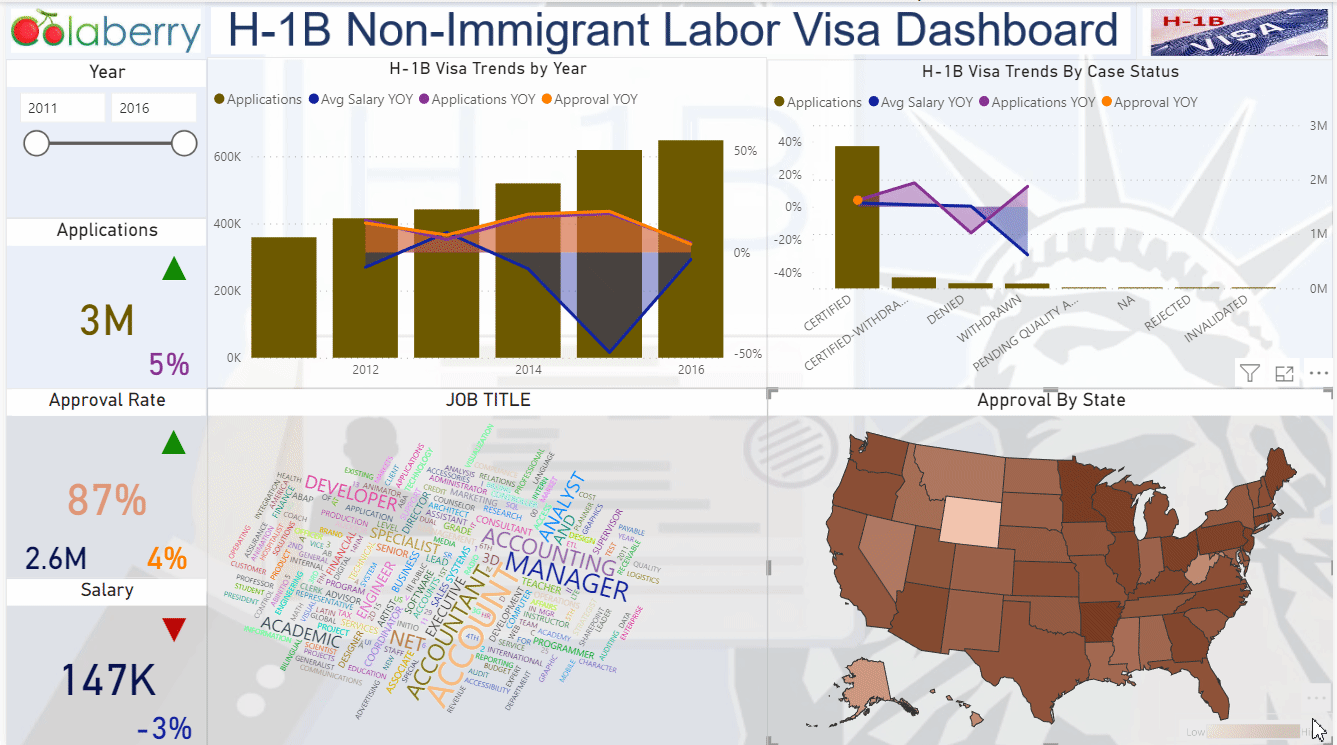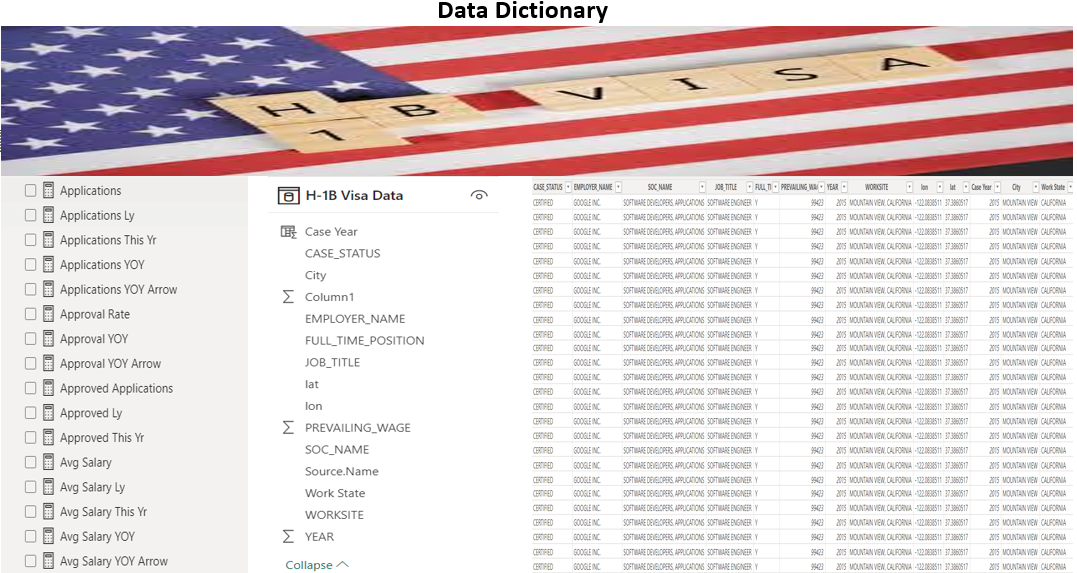Completion Date:
Project Overview
This dataset consists of H-1B visa applications in the United States between 2011 and 2016. The dataset provides valuable insights into visa trends, including the number of applications, approval rates, and average salaries for different job titles. Using interactive visualizations, you can explore changes in visa applications over time and across regions. This data is useful for employers, job seekers, and policymakers interested in understanding the H-1B visa program and its impact on the American workforce.
Role:
Problem Statement
The United States is facing a staggering shortage of skilled workers, with nearly 4 million job openings unfilled even if all job seekers were to find employment. According to the Manhattan Institute, there are roughly 9.6 million job openings, while only 5.8 million people are searching for work. This significant gap highlights the pressing need to address the workforce shortage. Analyzing H-1B visa data between 2011 and 2016 can provide insights into the program\\\\\\\'s impact on the American workforce. This analysis aims to inform policymakers about the future of the H-1B visa program and its role in addressing the skilled worker shortage.
Next Steps
1. Based on the data analysis, it is evident that there was a significant increase of 17% in H-1B visa applications in 2014 compared to the previous year\\\\\\\'s growth of 6%. In light of this positive trend, I recommend that policymakers and immigration authorities assess the capacity and efficiency of the visa processing system. Measures such as streamlining the application process, enhancing resources and personnel, and leveraging technology can help manage the growing demand and ensure timely and fair processing.
2. The data reveals a substantial decrease of 49% in average salary year-on-year between 2013 and 2015, which raises concerns about compensation for H-1B visa holders during that period. To address this issue, I suggest that employers, in collaboration with relevant authorities, conduct a comprehensive analysis of wage trends, market conditions, and prevailing wages. This analysis will ensure that H-1B visa holders receive competitive and fair remuneration, promoting a positive work environment and attracting top talent.
3. The positive trend of a 10% increase in average salary year-on-year from 2011 to 2013 indicates growth and higher earnings potential in the H-1B job market. To capitalize on this trend, I recommend that employers and policymakers focus on promoting skill development and specialized training programs that align with the evolving demands of the labor market. By nurturing a skilled workforce, we can enhance productivity, drive innovation, and provide better career prospects for H-1B visa holders.
4. The regional variations in H-1B visa approval rates highlight the need for a comprehensive evaluation of the factors influencing these disparities. To address this concern, I recommend conducting a thorough analysis of the approval process, taking into account factors such as industry demand, local job markets, and employer compliance. This evaluation will help identify best practices, ensure consistent and fair decision-making across all states, and address any potential bias or discrepancies.
5. Based on the insights derived from the H-1B visa data analysis, I strongly recommend establishing a robust monitoring and evaluation framework for the program. Regular assessments of program outcomes, feedback from employers and visa holders, and collaboration with relevant stakeholders will provide valuable insights. By continuously monitoring the program\\\\\\\'s impact on the American workforce, we can make data-driven decisions, identify areas of improvement, and ensure the program\\\\\\\'s effectiveness in meeting its objectives.
-These recommendations, derived from the analysis of the H-1B visa dataset, reflect the need to address specific concerns and improve the program. As we strive for a fair and efficient H-1B visa system, implementing these suggestions will help create a positive impact on the American workforce and the overall success of the program.
Deployment
https://app.powerbi.com/view?r=eyJrIjoiMDAyZGJkZDUtYTAzNy00MWExLWFkOTYtMGNhYTlkYzYxNjVlIiwidCI6ImYxYWQ2ODFmLTZmNjItNDNhOS04MjQxLTA3MDMxNjBlMTM0OCIsImMiOjN9





